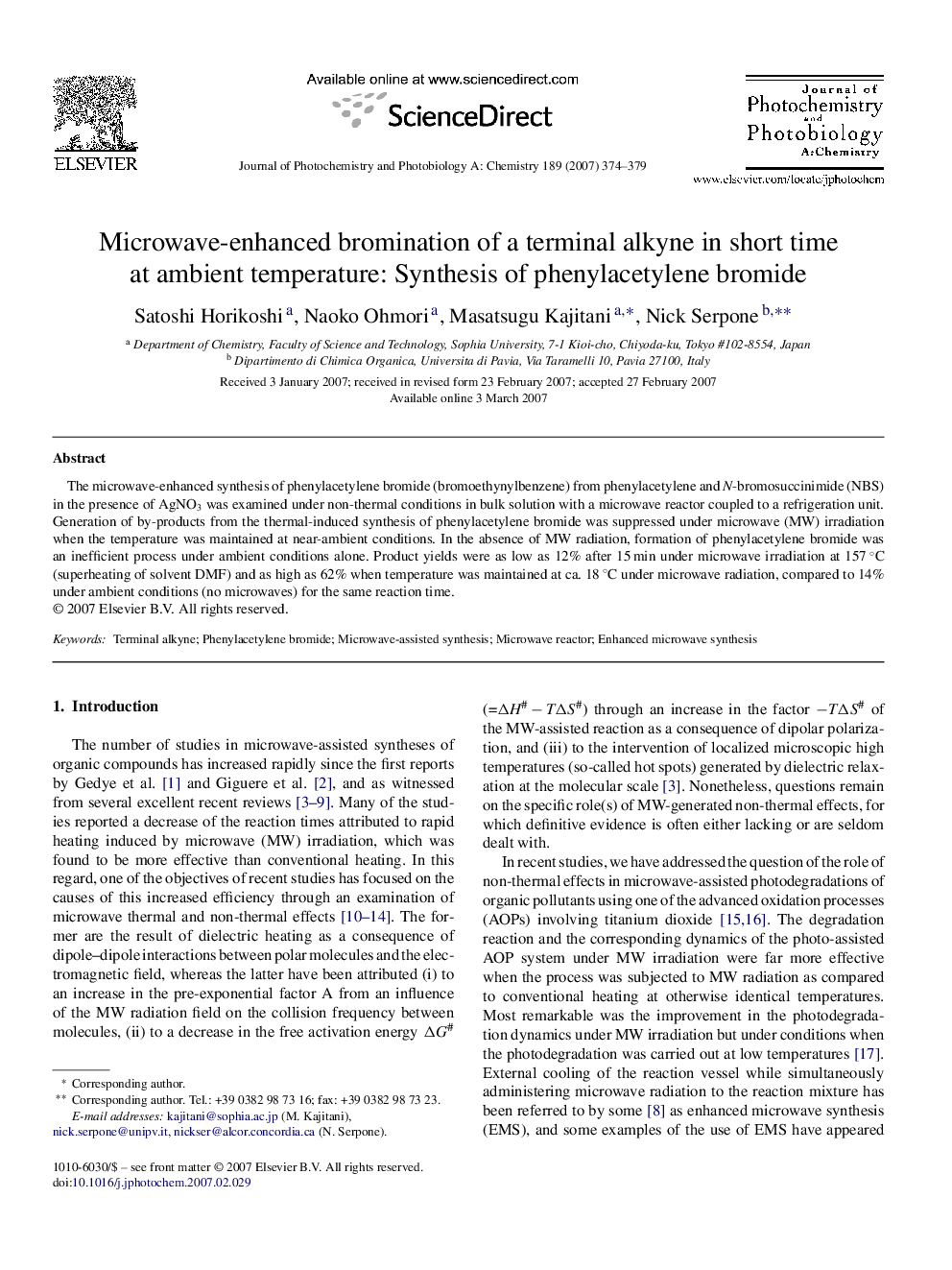| Article ID | Journal | Published Year | Pages | File Type |
|---|---|---|---|---|
| 29288 | Journal of Photochemistry and Photobiology A: Chemistry | 2007 | 6 Pages |
The microwave-enhanced synthesis of phenylacetylene bromide (bromoethynylbenzene) from phenylacetylene and N-bromosuccinimide (NBS) in the presence of AgNO3 was examined under non-thermal conditions in bulk solution with a microwave reactor coupled to a refrigeration unit. Generation of by-products from the thermal-induced synthesis of phenylacetylene bromide was suppressed under microwave (MW) irradiation when the temperature was maintained at near-ambient conditions. In the absence of MW radiation, formation of phenylacetylene bromide was an inefficient process under ambient conditions alone. Product yields were as low as 12% after 15 min under microwave irradiation at 157 °C (superheating of solvent DMF) and as high as 62% when temperature was maintained at ca. 18 °C under microwave radiation, compared to 14% under ambient conditions (no microwaves) for the same reaction time.
